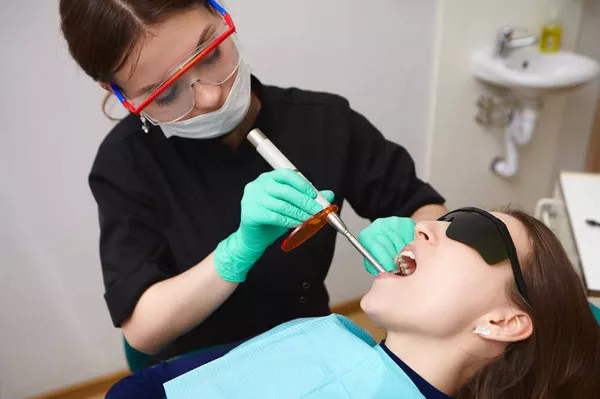Wisdom teeth removal is a common dental procedure, and the recovery period involves a careful consideration of dietary choices. Nuts, being a crunchy and dense food, raise questions about their suitability during the healing process. In this comprehensive guide, we will explore the factors influencing the timeline for reintroducing nuts into your diet after wisdom teeth removal.
Understanding the Initial Recovery Phase
Follow Professional Advice:
Your oral surgeon or dentist will provide specific guidelines for the post-operative period, including dietary recommendations. It is crucial to adhere to these instructions to ensure optimal healing and prevent complications.
Soft Diet Emphasis:
The initial days following wisdom teeth removal often require a soft diet to avoid irritation to the surgical sites. Soft foods like yogurt, mashed potatoes, and smoothies are typically recommended during this phase.
Why Avoid Nuts Initially?
Potential Irritation:
Nuts, being hard and crunchy, can pose a risk of irritation to the surgical sites. Chewing on nuts may create pressure and friction in the mouth, potentially disrupting the healing process and increasing the risk of complications.
Protecting Blood Clot Formation:
After the extraction, a blood clot forms in the socket, promoting healing. Consuming hard foods like nuts too soon may dislodge this clot, leading to a condition known as dry socket, which can be painful and delay the healing process.
Gradual Introduction of Solid Foods
Consult Your Dentist:
Before reintroducing solid foods, including nuts, into your diet, consult with your dentist or oral surgeon. They can assess your healing progress and provide personalized advice based on your specific case.
Wait for Signs of Healing:
Patience is key. Wait until you experience significant healing and a reduction in swelling before considering the reintroduction of solid and crunchy foods like nuts. The timeline for this varies among individuals.
Factors Influencing the Timeline
Individual Healing Speed:
The rate at which individuals heal can vary. Factors such as age, overall health, and adherence to post-operative care instructions all play a role in determining when it is safe to reintroduce nuts into your diet.
Severity of Extraction:
The complexity of the extraction procedure can influence the recovery timeline. If the extraction involved multiple teeth, impacted wisdom teeth, or other complications, a more extended soft diet period may be recommended.
Indications that You Can Consider Nuts
Reduced Swelling:
Wait until any swelling or inflammation has significantly decreased. Introducing nuts too early may exacerbate these symptoms and hinder the healing process.
Pain Reduction:
If you experience minimal to no pain and discomfort, it may be an indication that the healing process is progressing well. However, it’s crucial to consult with your dentist before introducing challenging foods.
How to Safely Eat Nuts After Wisdom Teeth Removal
Choose Softened or Ground Nuts:
To minimize the risk of irritation, consider choosing soft or ground nuts initially. You can find pre-ground nuts or grind them yourself to create a texture that is easier to manage during the early stages of recovery.
Chew Carefully:
When you feel ready to reintroduce nuts, chew them carefully and on the side opposite to the extraction sites. This helps prevent direct contact with the surgical areas, reducing the risk of irritation.
Alternate Nutrient Sources During Initial Recovery
Nutrient-Rich Soft Foods:
While avoiding nuts, focus on incorporating other nutrient-rich soft foods into your diet. Avocado, dairy products, and nut butters are excellent alternatives that provide essential nutrients without the potential for irritation.
Maintain Hydration:
Hydration is crucial for the healing process. Ensure you are drinking enough water and consider incorporating hydrating foods like watermelon and cucumber into your diet.
Monitoring for Signs of Discomfort or Complications
Be Attentive to Your Body:
Pay close attention to how your body responds when you start reintroducing solid foods. If you experience any discomfort, pain, or signs of irritation, it may be an indication to temporarily avoid nuts and consult with your dentist.
Promptly Address Any Issues:
If you notice any complications, such as increased pain, swelling, or concerns about the surgical sites, contact your dentist promptly. Timely intervention can help prevent further issues and ensure a smooth recovery.
Conclusion
The timing for reintroducing nuts after wisdom teeth removal requires a cautious approach. It is essential to prioritize soft foods during the initial recovery phase to promote healing and minimize the risk of complications. Factors such as individual healing speed, the complexity of the extraction, and the absence of pain and swelling play a role in determining when nuts can be safely incorporated back into your diet.
Before making any dietary changes, always consult with your dentist or oral surgeon for personalized advice. They can assess your specific case and provide guidance on the optimal timeline for reintroducing crunchy foods like nuts. Remember that each person’s recovery is unique, and a gradual approach ensures the best outcome for your oral health.
Can I Eat Pizza After Wisdom Teeth Removal
How Long To Heal After Wisdom Tooth Extraction
Sleeping Position After Wisdom Teeth Removal































